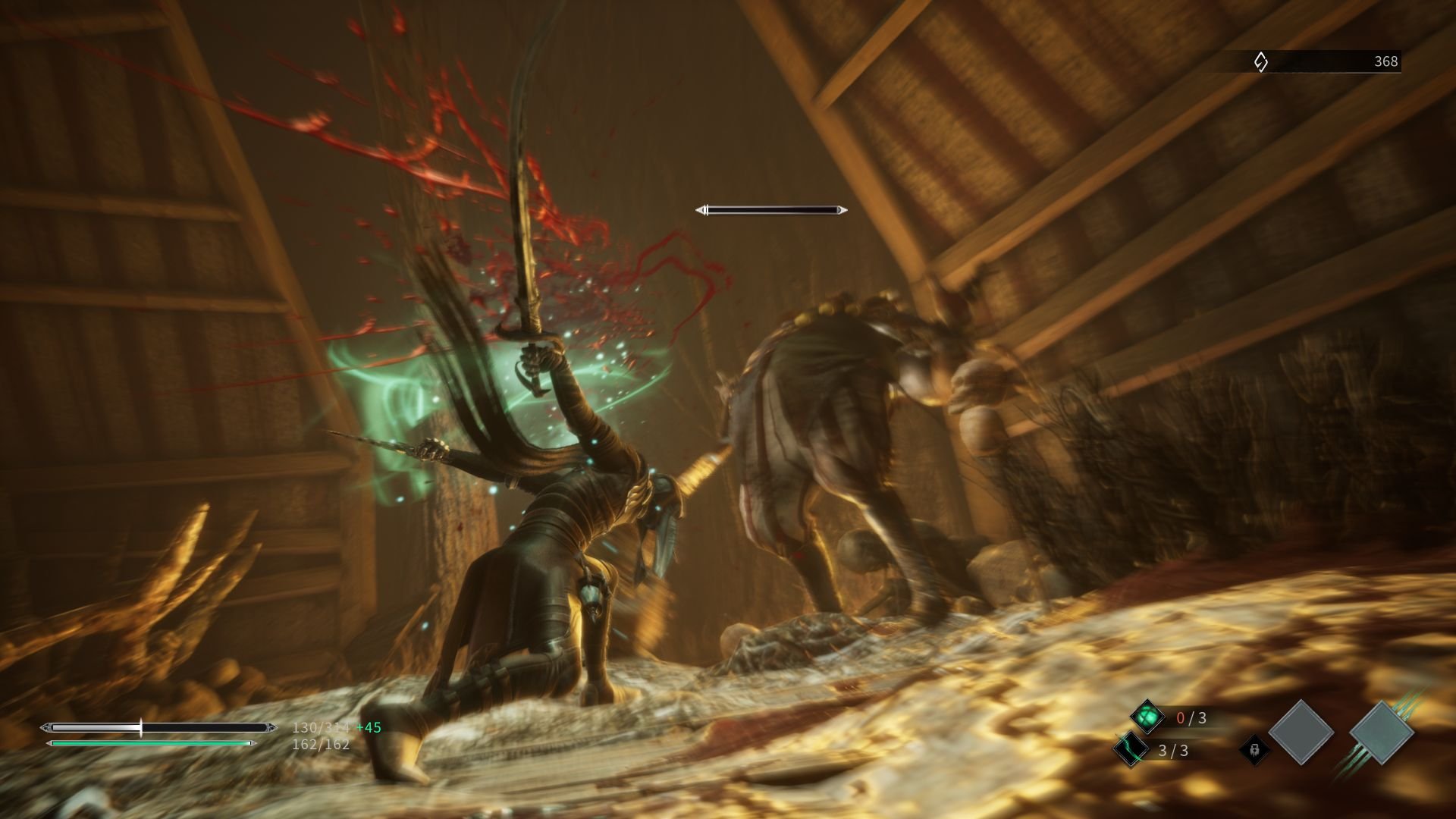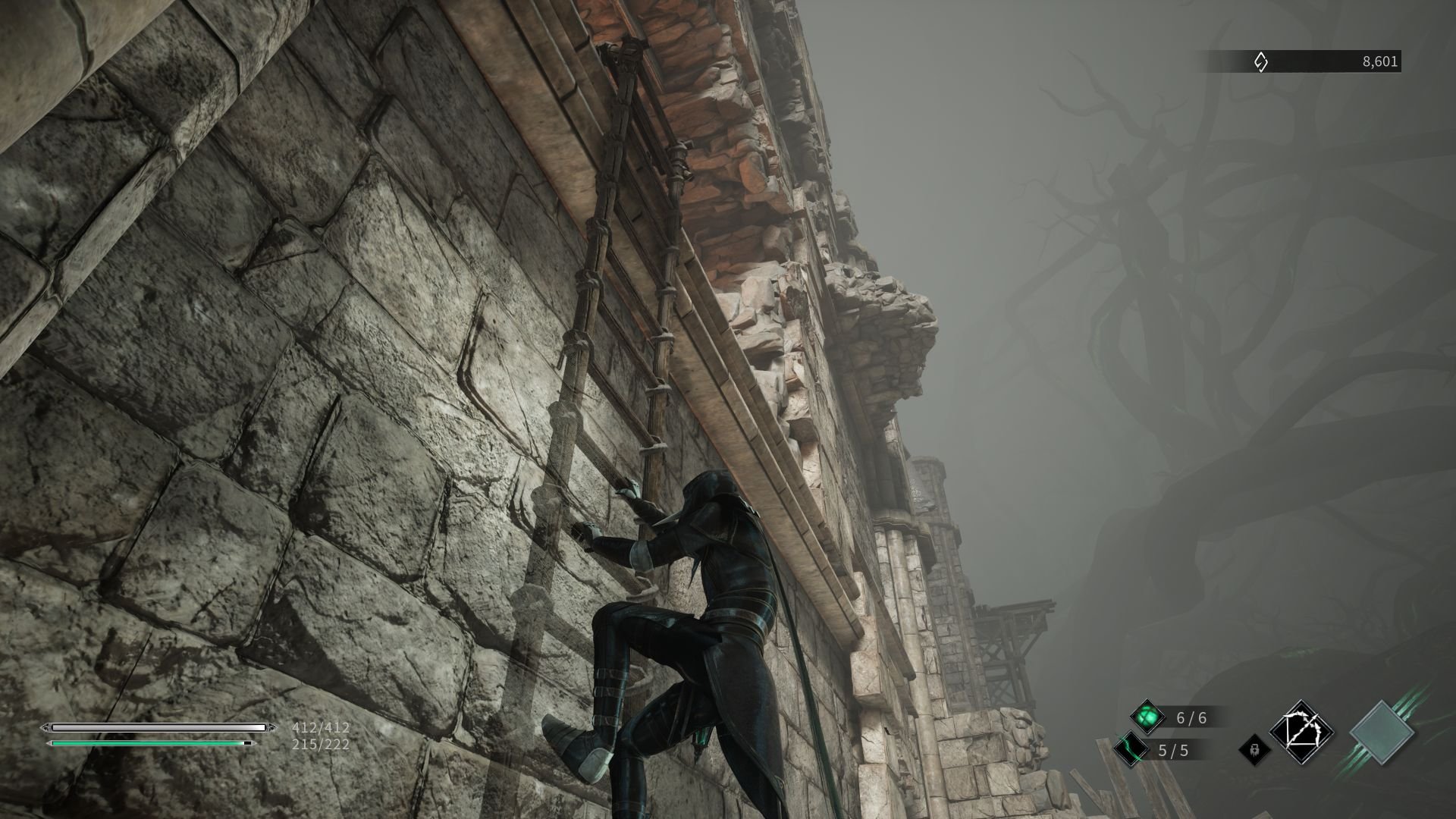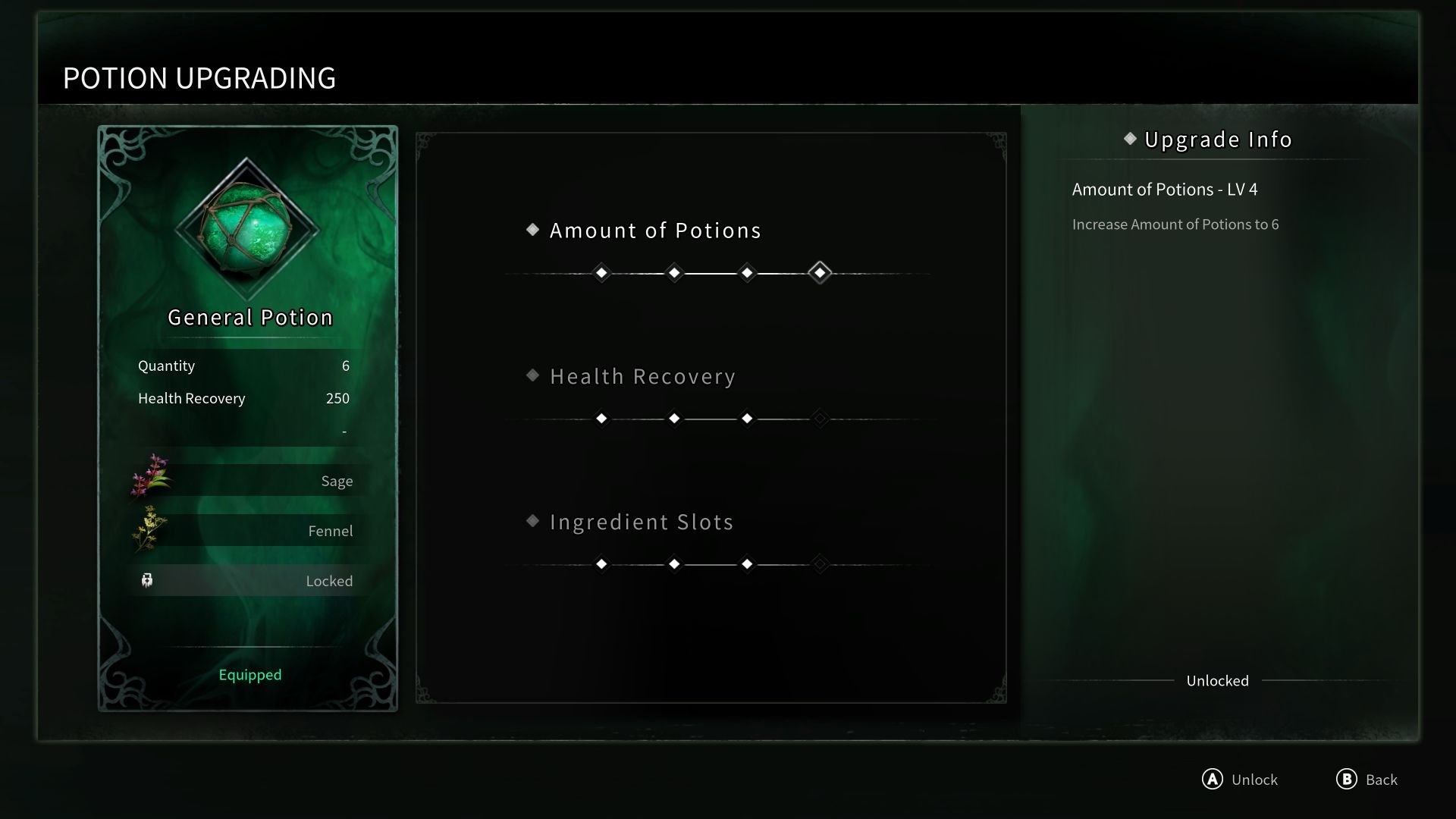Remember Me.
Given current gaming trends, it’s very likely that Fromsoftware might be one of the most influential developers in gaming. From Demon Souls to Elden Ring and everything in between, you almost can’t go a single month without seeing yet another Soulslike title; an experience that often wears its influences on its sleeves. While many of these titles waver in their execution, many often miss the crucial details of why Fromsoftware’s games have endured for as long as they have. Yet, you can still find a few that shine, despite not entirely living up to their inspirations. Thymesia, the debut game from OverBorder Studios is such an example, a game that is wildly fun but doesn’t break away from the formula enough to become its own thing.
Across each Soulslike game that comes out, you often have titles that adapt certain gameplay systems or how combat generally works, but they often go about it in a way where it isn’t simply just a copy and paste of Dark Souls; often bringing something new to the formula and creating its own identity as a result. This was something I adored about The Surge 2, which is still one of my favorites of these types of games. While Thymesia has some interesting ideas that could be fleshed out in a sequel, the effort here is still remarkably solid, but there is very little identity here to make it stand out from the pack.
Thymesia, for all its comparisons, is still challenging, but apart from a few hard-to-telegraph attacks from a few bosses, it is considerably easier than most Soulslike entries. You’ll trek out upon three maze-like locations that end up offering more as you dive back into them, fleshing out additional missions, and new bosses, and carving through a horde of tough fights to stock up on ingredients to make your potions stronger and harvest enough memory shards to level up your abilities and stats even further. You’ll also look to uncover crucial information that will influence your ending, making for a bit of well-rounded replayability as you dive back in to get the best result.
Thymesia is derived from the word “Thymesis”, which translated from Greek, means “Remembering” or “Memory”. This is fitting considering that is something your protagonist, Corvus, is tasked with achieving. As you start your adventure, Corvus will lose his memories and the bulk of the game’s narrative is looking to get them back. Suffering from total amnesia, Corvus will revisit the events of his previous outings, piecing together clues and actions that will help him, and his companion, Aisemy, stop a plague from ravaging the Kingdom of Hermes. While you’ll interact with a small cast of characters, much of the narrative here is told throughout these records and clues, which is typical of the genre and does lessen the impact of what the story could have been.
The game opens with Corvus being defeated in battle, only to wake up in the moody and atmospheric Philosopher’s Hill, a hub location where Corvus will return to after he has remembered everything he can in any given location or mission. It is here where he will converse with Aisemy, a young girl who almost seems to be the one taking care of the both of them. Philosopher’s Hill isn’t any sort of sprawling or ever-growing location, but it does feature a few areas that allow you to tinker with your loadout between missions, even if you have all that access while out on the job.
It’s rather fitting that Corvus has an almost raven-like appearance, given that ravens are oft considered carriers of disease. This is further applied as Corvus can utilize what are called plague weapons, an arsenal that is collected from defeating enemies who wield such weapons. While you’ll have a single blade to carry you through the rough 10-15 hour adventure, plague weapons are where you can complement your playstyle with anything from bows to spears to large crushing hammers. As you defeat more enemies, your plague weapons grow and expand, making them even more useful. You will eventually be able to lock one as a secondary attack or consume a nearby foe for a temporary third which are referred to as reaved weapons. It’s a nice system that flows together rather well with its limitation on not exactly featuring classes.
Corvus is equipped with a few basic weapons. He has his trusty saber, a dagger for parrying, and razor-sharp talons that can decimate foes who are left vulnerable from your attacks. If you charge this attack, you can then wield a spiritual version of their weapon upon impact. This is similar to simply equipping a plague weapon, but their use is not permanent and requires energy to use it. You can also throw out Raven Feathers as well, which are meant to interrupt critical attacks, but I often only used them to tick away at their health, then swooping in with my talons to prevent their health from refilling back up.
Enemies essentially have two health bars; one that acts as their overall armor, displayed in white, and another, marked in green, that if left unattended, can cause their armor to refill back up. If you attack with your talons, you can make short work of that green health bar, ensuring they cannot see it return. If you lower their health to zero, you can then perform a finisher, which eventually can see you get a bit of health earned back for your trouble. The combination of your blade, abilities, and talon attacks, can make some fights remarkably trivial as you pounce at their opened wound of a health bar and obliterate them into mist.
While there are some attacks that cannot be blocked, you’re going to rely on your parrying skills to often contend with some brutally challenging foes. Thankfully, the parry system has a lot of forgiveness as you can almost just slam the button down during an onslaught of attacks, often catching them all with little to no effort. You do have a dodge, but as much as I’ve tried to put it into words, there is something off about how it feels when used with the lock-on camera, where it feels like it is a bit too loose in its execution.
Every aspect of what Corvus can do can be upgraded. You’ll earn an upgrade currency called memory shards to level up your stats as well as individual drops of the same currency to consume and spend it alongside your earnings. This is the game’s equivalent of souls, which are lost when you die but can be retrieved back as long as you make it to them alive. And, in typical fashion, each upgrade towards your Strength, Vitality, and Plague capabilities will increase upon each level up. These upgrades contribute towards your attack damage, wound amount, claw damage, health, and the energy to use your reaved weapons, stolen temporarily from your foes.
As you level up, you will earn talent points to increase a wealth of different passive, defensive, and offensive capabilities. You can upgrade your saber, parrying, dodging, talons, feathers, and some overall strategies as well. Some of these are structured like a skill tree with having to make certain choices as you block off access to particular alternatives. These upgrades vary from being able to run into a critical attack to leap into the air, boosting your damage output, to increasing the number of times you can dodge. While some of these skills don’t quite make night or day changes, several of them often do, making a once difficult encounter a walk in the park.
While you will only start with a basic potion, you will eventually have access to two additional types; long-lasting or fast-acting. While that is normally terminology for some sort of medication you’d find in a drug store, they translate to long-lasting being a stronger but slower to heal potion and fast-acting to be weaker but far more instant in your health recovery. Honestly, the general potionI started with served all my needs as it was strong and fast enough that It saved my ass more times than I can count. Potions can be enhanced and improved with items that drop from tougher enemies as well as tinkered around with random ingredients to boost their effect across a wide range of different perks.
Putting all your skills and weapons to the test is via your typical Soulslike combat. You’ll look for patterns and telegraphed attacks, and use your talons to cleave away at their wounds. You’ll find a wooden chair to rest at that will allow you to upgrade Corvus, and it will, of course, also replenish the enemies around you, making for farming spots to aim for that next memory shard goal. While some enemies will be push-overs when compared to others, I never found the layout of enemies to be set up in the way where you live in constant fear of ambushes, which was great, but since the genre has prepared me for them, I couldn’t help but look around every single corner nonetheless.
The overall environments are fine without being really that standout. Your first major area is built like a dark and atmospheric treehouse, with looped paths known for the genre and plenty of secret paths hidden behind smashable barrels. The second area is far more colorful and less maze-like and is easily my favorite of the three due to its design and aesthetic. The final location is a large fortress that isn’t anything we haven’t seen before but lacks in feeling memorable as it isn’t as visually interesting as the previous two. There is one last location, but it is merely a small battleground for one special encounter, comprised of just one single area.
While its visuals do enough to be rather impressive, you’ll soon take notice of some very basic environmental design that is meant to contain the limits of what this team was able to do. I don’t fault them with these shortcuts whatsoever given that the team who built this is comprised of around seven people. With that information, I am able to set my expectations right where they need to be. I don’t find anything in the game to be crudely executed or poor in any respect and often found the game to work extremely well for the size and scope of what I’ve played here.
Thymesia knows what it was aiming for and largely succeeds. I do hope OverBorder Studios turns Thymesia into a series with more unique gameplay mechanics and features that allow it to break away from simply being yet another soulslike that fails to truly deliver. The combat and abilities you wield do make for a very satisfying experience, and while I wasn’t fond of every single boss, there are a few encounters that truly sing. Thymesia isn’t as vast as its inspirations but does entertain for its somewhat short length, even if again, it doesn’t really stand out from the pack.
Developer - OverBorder Studio. Publisher - Team17. Released - August 18th, 2022. Available On - Xbox Series X/S, PS5, Nintendo Switch, Windows PC. Rated - (M) Blood, Violence. Platform Reviewed - Xbox Series X. Review Access - A review code was provided by the publisher for the purpose of this review.















